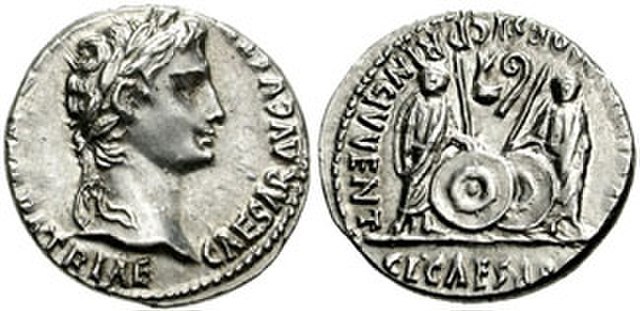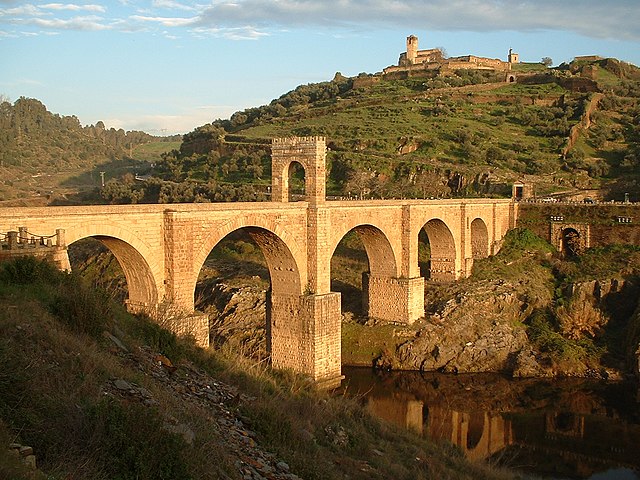The gens Julia was one of the most prominent patrician families in ancient Rome. Members of the gens attained the highest dignities of the state in the earliest times of the Republic. The first of the family to obtain the consulship was Gaius Julius Iulus in 489 BC. The gens is perhaps best known, however, for Gaius Julius Caesar, the dictator and grand uncle of the emperor Augustus, through whom the name was passed to the so-called Julio-Claudian dynasty of the first century AD. The nomen Julius became very common in imperial times, as the descendants of persons enrolled as citizens under the early emperors began to make their mark in history.
Bust of Julius Caesar (44–30 BC), Museo Pio-Clementino, Vatican Museums
Denarius issued under Augustus from the mint at Lugdunum (Lyon, France), showing Gaius and Lucius Caesar standing facing on the reverse (circa 2 BC–AD 14)
Aeneas, legendary ancestor of the Julii, with the god of the Tiber.
Trajan's Bridge at Alcántara, built by C. Julius Lacer.
The patricians were originally a group of ruling class families in ancient Rome. The distinction was highly significant in the Roman Kingdom and the early Republic, but its relevance waned after the Conflict of the Orders. By the time of the late Republic and Empire, membership in the patriciate was of only nominal significance. The social structure of ancient Rome revolved around the distinction between the patricians and the plebeians. The status of patricians gave them more political power than the plebeians, but the relationship between the groups eventually caused the Conflict of the Orders. This time period resulted in changing of the social structure of ancient Rome.
Romulus and his brother, Remus, with the she-wolf. Romulus is credited with creating the patrician class.





